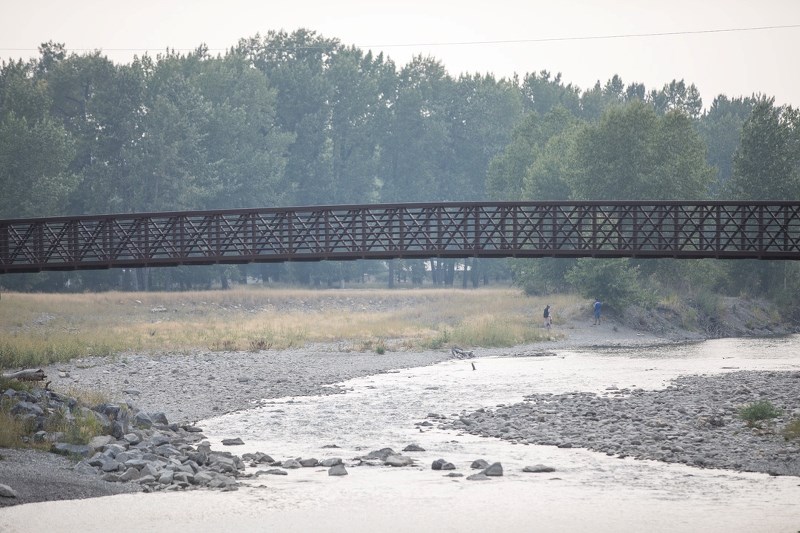The summer of 2017 has been one of the driest on record and the hot, dry weather is expected to continue into the fall, said an Environment Canada meteorologist.
“The story of the summer has been hot and dry with a pretty persistent ridge of high pressure bringing a warm air mass, a dome of warm air if you will, over southern B.C. and Alberta,” said meteorologist Kirk Torneby.
This summer has been the 24th driest in the Calgary area since records were first taken in 1881. As well, the month of June was the 20th driest on record and the driest since 2009, but July was closer to normal.
According to Alberta Agriculture, accumulated precipitation over the last three months in much of the MD of Foothills is rated as very low, at levels seen once in every 12 to 25 years.
Conditions worsen to the MD’s southwest, where precipitation has dropped to levels seen once every 50 years or more.
Torneby said the hot, dry weather is likely going to continue for the next few months. It’s more difficult to predict precipitation, he said, but it’s likely to remain dry in the short-term.
The dry weather has seen trees in town showing signs of heat stress, said Gord White, Town of Okotoks Urban forester.
“It varies by locations, but certainly it’s the earliest I’ve ever seen drought-stressed trees dropping their leaves,” he said.
White said some trees started dropping their leaves in early August. When deciduous trees drop their leaves, he said they become dormant and should be able to survive the dry conditions.
“They’ll leaf out next spring, provided there’s enough moisture in the ground in the spring time, that might be another factor,” said White.
He said some of the trees along 32 Street appear to be showing more signs of heat stress. Those in natural areas could also be suffering, but are less likely to show drought stress because they are able to capture more moisture than trees in developed areas.
White said the Town uses non-potable water on established trees around the community. The Town irrigates trees in the downtown area with potable water using a drip system.
He said irrigation lines are necessary downtown because the asphalt and concrete sidewalks prevent rainwater from soaking into the ground.
“Without the irrigation system we might not have trees downtown,” he said. “They wouldn’t live for a very long time.”
He said he saw signs of drought stress in 2016, but it wasn’t as bad as this year. He said some tree could die from the dry weather, but it shouldn’t be too bad if there is moisture in the coming months and spring.
He said the trees should be fine in the spring if they have enough moisture in the fall or spring months.
He said it would be wise for people to water the ground around trees in the fall before the ground freezes.
“Springtime is the key thing, so people should try to ensure their trees are ready to leaf out in the spring,” he said. “That’ll be the time to give them a good drink.”
He said it’s particularly important for evergreen trees to have moisture in the ground over the winter and the spring.
The hot weather gave a Blackie farmer an early start for the harvest, but he’s hoping for rain when it’s time to seed in the spring.
Blackie-area farmer Roy Newman said it’s been a hot, dry year, but this hasn’t hurt his crops.
“We had the potential for a huge crop, like last year,” he said. “An inch of rain would’ve helped a lot”
Mother Nature gave him an early start and the warm, dry weather should help him get his harvest done early, he said.
That said, his pastures are in “terrible” condition from the lack of rain and conditions are drier further to the south.
Just two miles to the north, he said farmers were able to benefit from a little more rain closer to the Bow River.
“You go north of the Bow and the crops look fantastic, they look as good as they’ve ever been,” he said.
He’s now hoping for rain. This year’s moisture was sufficient, he said, but it was less than it should’ve been and there needs to be rain and snow over the fall and winter to replenish groundwater supplies.
“We desperately need rain for next year… there’s no water reserve in the soil now,” he said.




